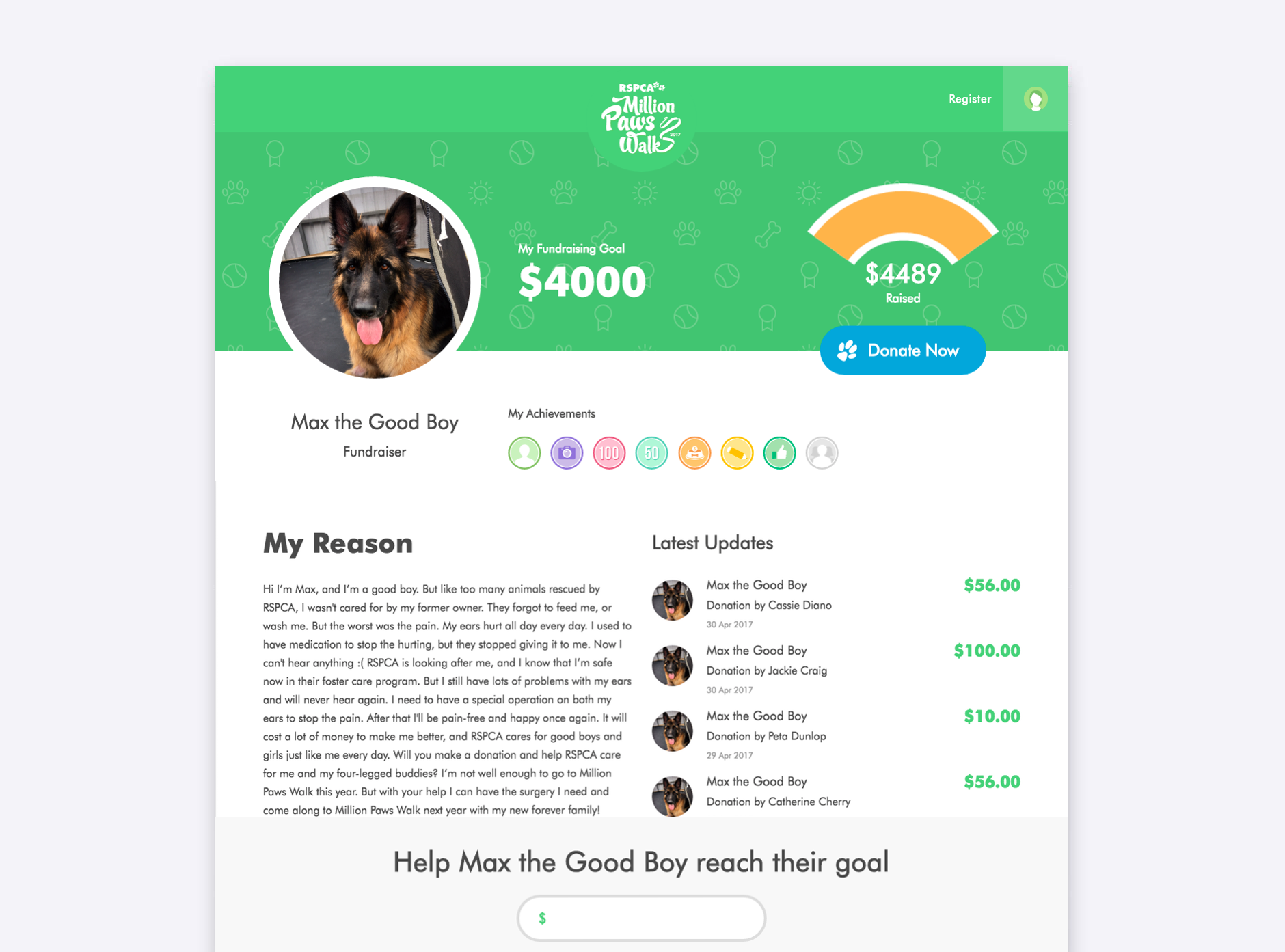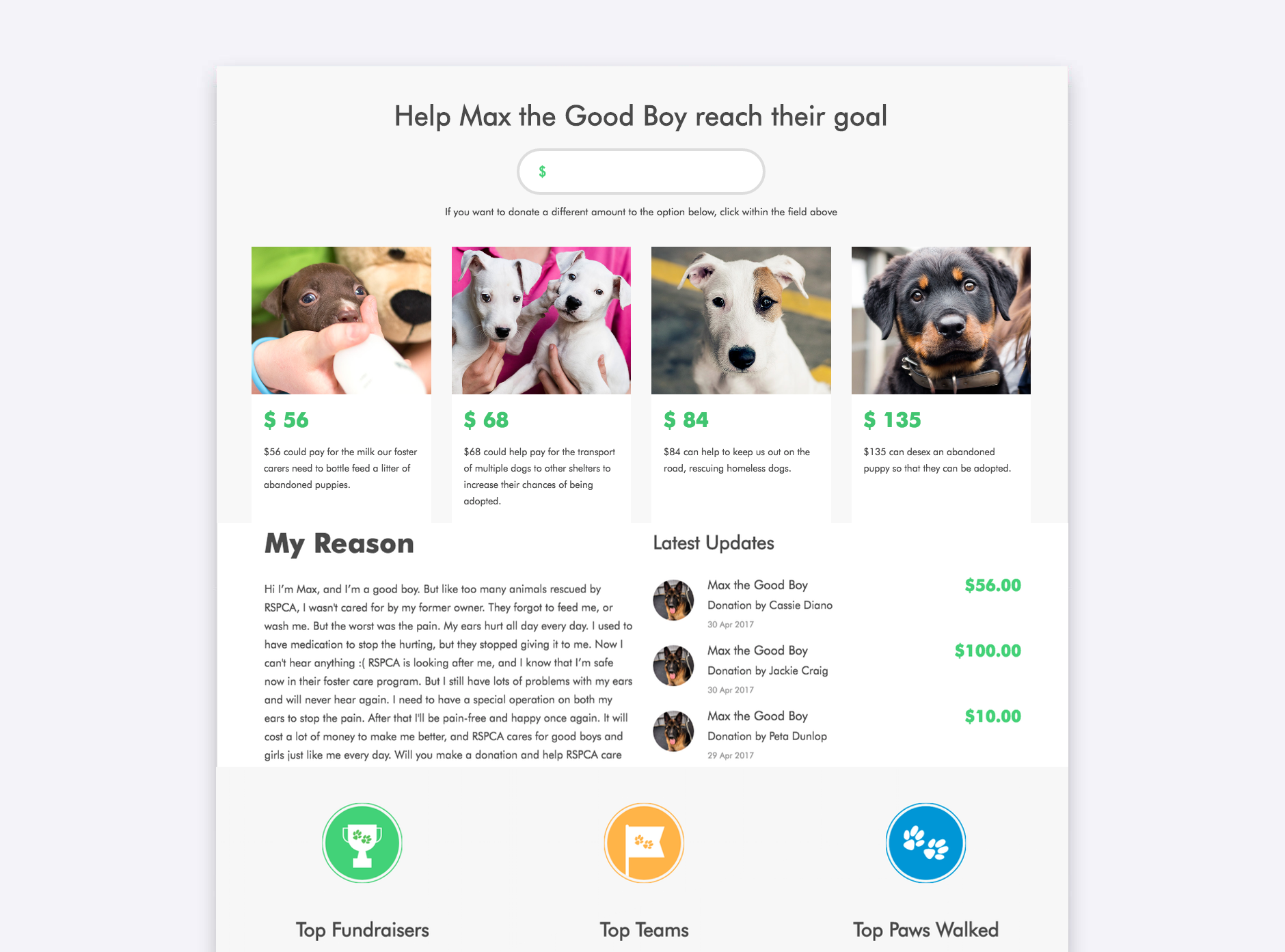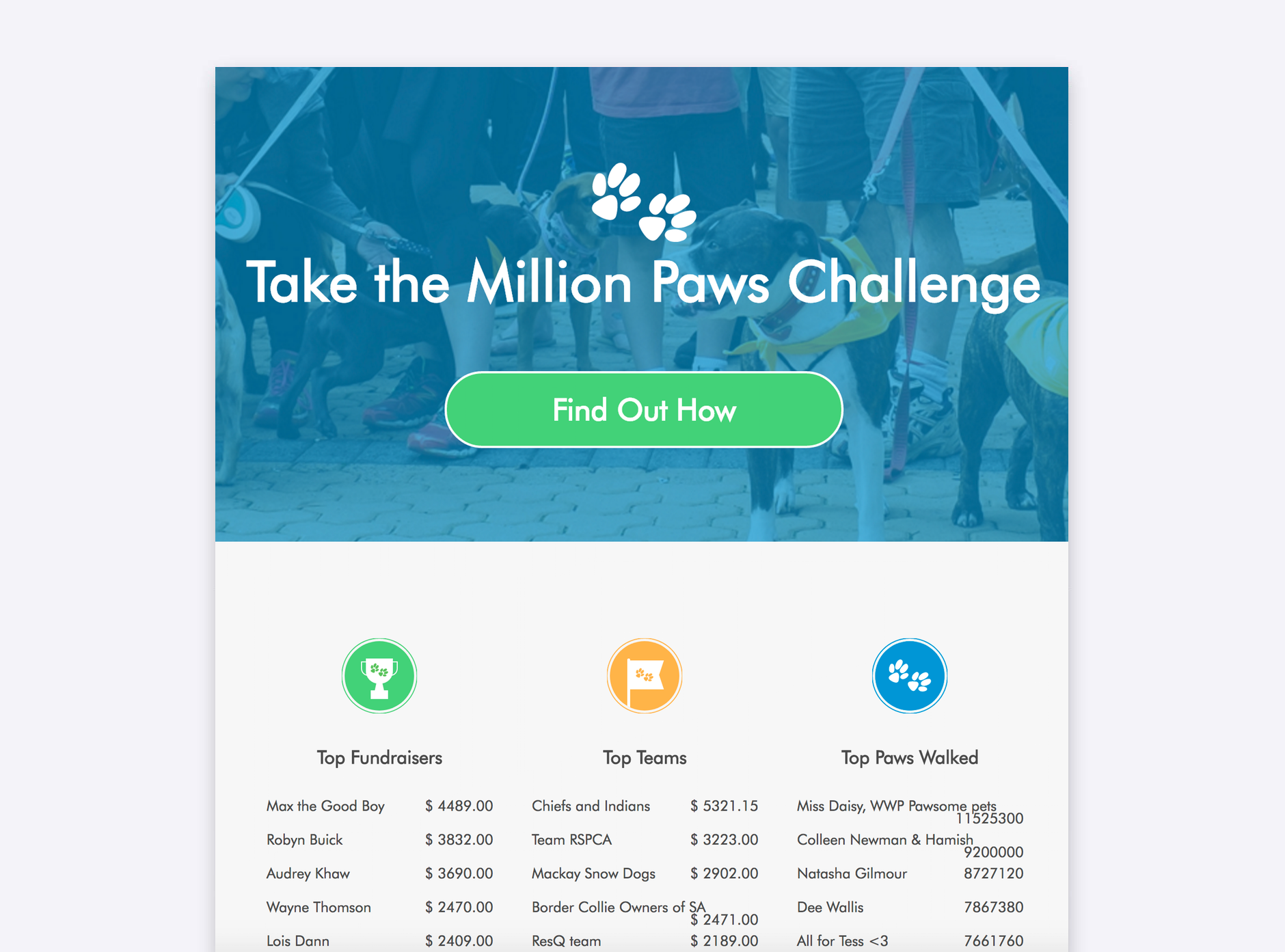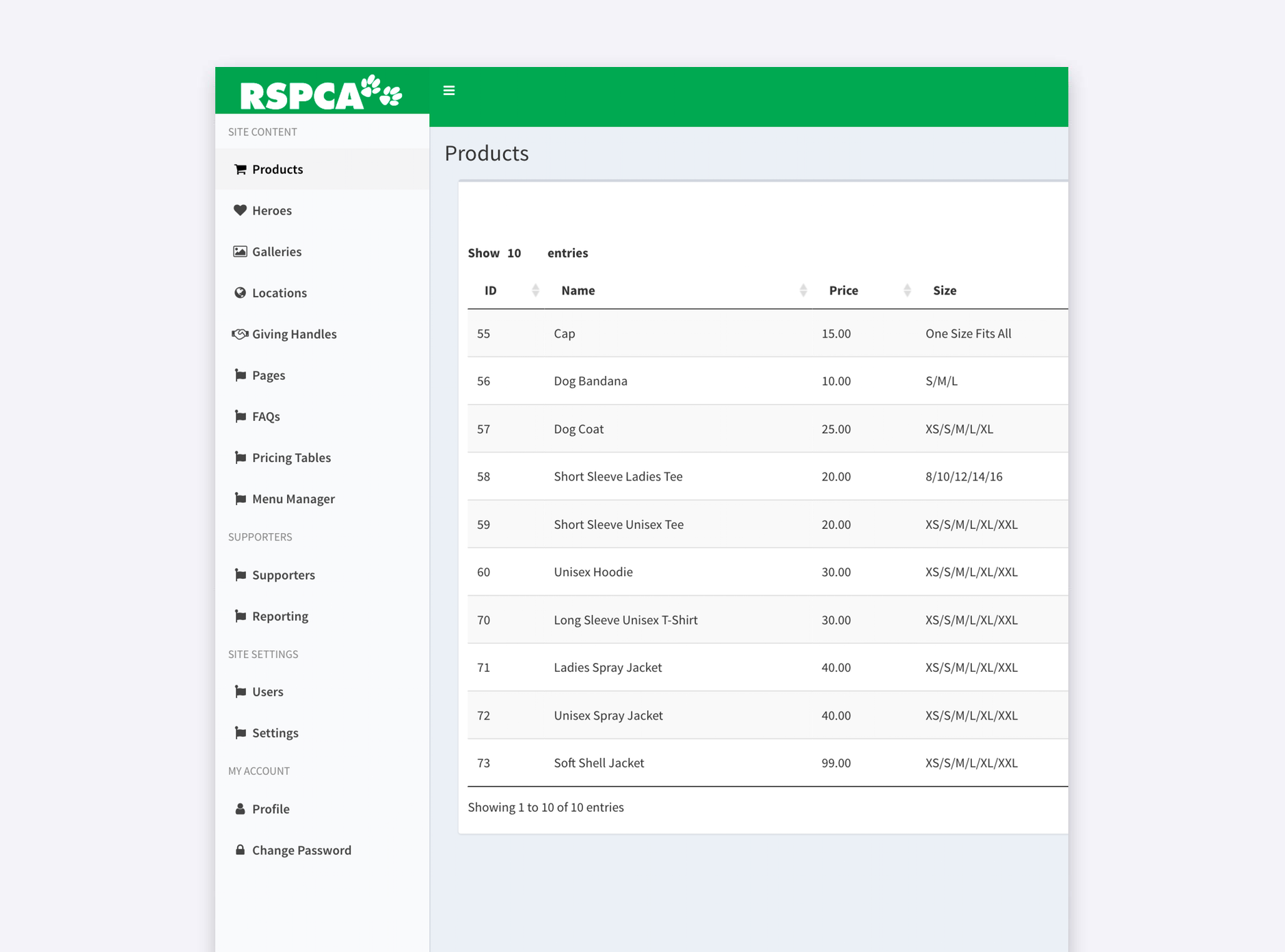Overview
Project Need
The RSPCA Million Paws Walk (MPW) is a walking event where pet owners and their dogs come together to walk in different locations across Australia to raise awareness and funds for animals in need. The event has been running for more than twenty years since its inauguration in 1994. Over the years RSPCA Australia has used a number of different off and online tools to promote the event, drive ticket sales and enable peer-to-peer fundraising. These systems have been third party, off the shelf products which do not communicate with one another and lack the flexibility for large scale customization and integrations.
Project Goals
- Increase event registration through refined user experience.
- Increase fundraising opportunities through a unified event registration and fundraising sign up process.
- Improve the donation user experience with additional payment options and enable fundraisers and donors to communicate with one another.
- Streamline administration process by improving reporting, making admin section tasks easier to manage and providing one point of access to all information.
Technology
Laravel, Vue.js
Client
RSPCA
What We Did
UI/UX Design, Responsive Web Design, Web App Development, ThankQ Integration, eWay integration
Improving Peer to Peer fundraising
In 2016 the state member societies of the RSPCA agreed to move away from these third party applications and embark on building a custom platform that brings all of the online components of the event into one system. The decision was also made to incorporate a new, online engagement feature of the event, The Million Paws Challenge.
This expanded proposition provided the physical challenge component required to make peer-to-peer fundraising more interactive prior to the walking event, as well as appeal to a much larger audience. Through their fundraising or challenge page users could raise funds, join a team & share their progress on social media.
The previous MPW platforms had limitations on the frontend and backend at the detriment of user experience, visual engagement and customized functionality.
The new system needed to:
- Increase event registration through refined user experience.
- Increase fundraising opportunities through a unified event registration, fundraising and Challenge sign up process.
- Increase user engagement and fundraising through virtual reward badges and gamification
- Streamline administration process by improving reporting, making backend tasks easier to manage and providing one point of access to all information.
The MPW Platform
The new MPW system required a complete review of the functionality and user experience for both RSPCA and end users to deliver a platform which included:
- A content management system with user permissions per state that enabled supporter management, page and location content management and reporting.
- A peer-to-peer fundraising platform with gamification and integration into different payment gateways.
- Event registration, pricing management and ticketing functions
- Integration with Campaign Monitor for trigger and event based marketing email automation.
- Autoscaling hosting infrastructure on Amazon Web Services
- A re-usable platform for future RSPCA events and fundraising campaigns
From the creation of an overarching strategy the Leafcutter team worked with the RSPCA in an extensive scoping and UX phase to uncover core functionality and establish new and improved user flows. The utilisation of interactive wireframing and rapid prototyping enabled a collaborative and fast feedback process to achieve the creation of an optimised product with stakeholders across Australia.
The previous MPW brand and system designs were then revitalised with a mobile first approach with a clean and minimalistic focus to drive event registrations and peer-to-peer fundraising. To encourage ongoing user engagement the integration of behavioural, timed and triggered email journeys were designed and built. Post deployment the team worked in quick sprints to incorporate additional user feedback, build new features and optimize system performance.





